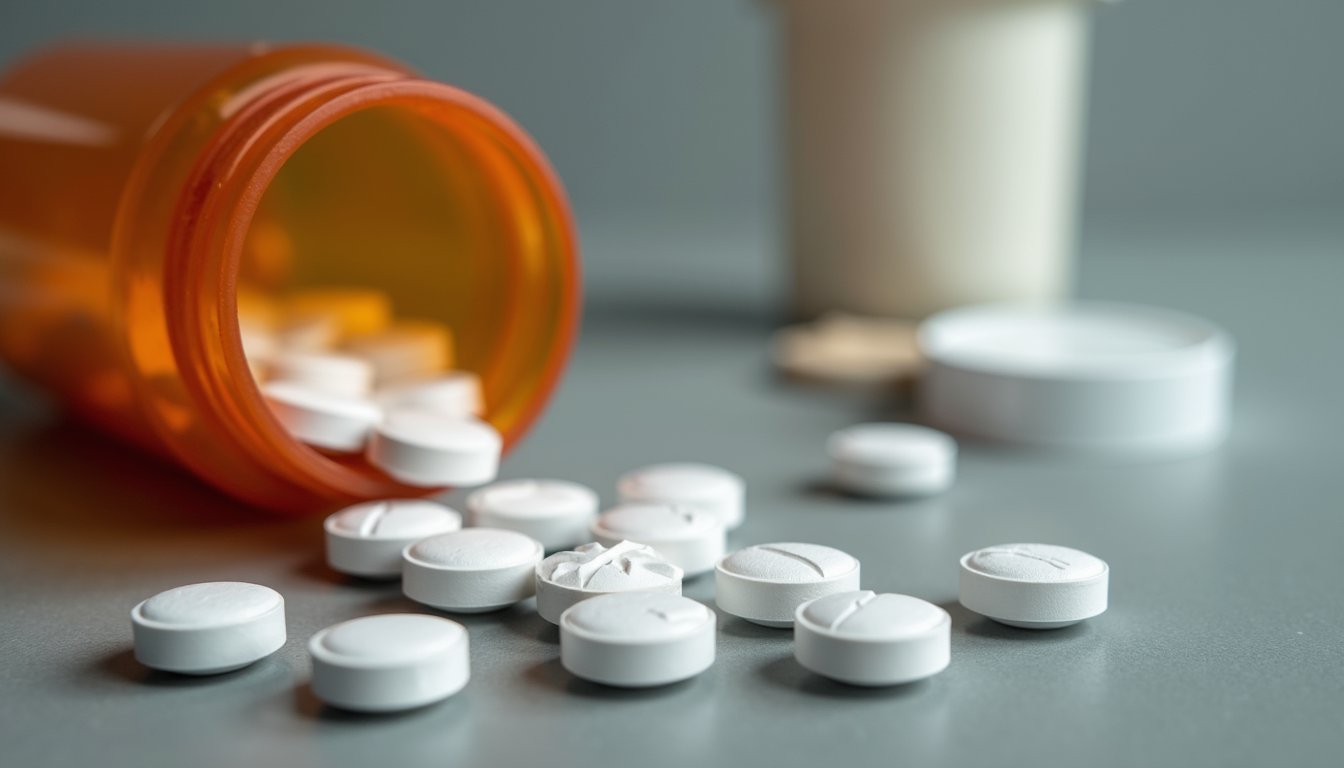Key Points
- Definition and Appearance: Fishscale cocaine is a term often used to describe a high-purity form of cocaine, recognizable by its pearly, reflective appearance.
- Health Risks: Abuse of fishscale cocaine can lead to severe health complications, including heart problems, respiratory failure, and addiction.
- Inpatient Medically Assisted Rehab: Inpatient programs offer 24/7 medical supervision, detox support, and evidence-based therapies for the best chance at long-term recovery.
- Role of Simonds Recovery Centers: Specialized treatment centers like Simonds Recovery Centers provide personalized care, relapse prevention strategies, and a supportive environment.
- Prevalence of Abuse: Cocaine misuse remains a significant concern in many communities, with fishscale cocaine presenting additional dangers due to its potency.
- FAQs on Cocaine: Topics include whether cocaine is an amphetamine, the potential for absorption through the skin (pores), signs of addiction, and the importance of seeking help.
Introduction
Cocaine is a powerful and potentially life-threatening stimulant drug derived from the leaves of the coca plant [1]. While all cocaine is dangerous, the term “fishscale cocaine” has emerged in recent years to describe a product reputed to be of higher purity than typical street cocaine. The name “fishscale” alludes to its pearly and reflective sheen, reminiscent of fish scales. This variety is sought after by users who believe it offers a more intense high. However, the increased potency also raises the stakes of overdoses, severe health complications, and fast-onset addiction.
This article offers an in-depth exploration of fishscale cocaine and its many risks. We will discuss its characteristics, the dangers it poses, and the most effective route to recovery—namely, inpatient medically assisted rehab. We’ll also highlight Simonds Recovery Centers and their comprehensive approach to helping individuals struggling with substance abuse. Along the way, we’ll answer pressing questions such as “Is cocaine an amphetamine?” and “Can cocaine be absorbed through pores?” so that readers gain a clear, accurate understanding of this perilous drug.
If you or a loved one is suffering from cocaine abuse, this guide will help you recognize the signs and explore the most effective options for treatment. After certain sections, you’ll see a call to action—an opportunity to seek professional help immediately and begin the journey toward lasting recovery.
Reclaim Your Life from Cocaine Addiction Today
Contact us now to begin your path toward lasting recovery
What Is Fishscale Cocaine?
Fishscale cocaine gets its moniker from the shimmering, scale-like appearance that some high-purity cocaine exhibits when cut or processed to a specific consistency. While standard street cocaine is often heavily adulterated with fillers (ranging from sugars to dangerous opioids like fentanyl), fishscale cocaine may have fewer adulterants or be processed in a way that retains some of its crystalline shine.
However, “higher purity” does not equate to “safer.” In fact, the opposite is true. Purity correlates with potency, and a drug that is more potent can more easily lead to overdose, acute toxicity, and rapid addiction.
The Misconception of “Higher Quality”
Many people erroneously believe that fishscale cocaine, being high-purity, is a “cleaner” or “better” drug. This misconception can lull users into a false sense of security and lead to reckless dosing. Indeed, the only difference between fishscale cocaine and regular cocaine is the degree of its potency. The end result—physical dependency, psychological addiction, and potential overdose—remains alarmingly similar, if not heightened.
If you suspect someone you know is dabbling in fishscale cocaine, reach out for professional assistance now. Our admissions team is ready to guide you toward the proper resources and support for recovery.
Reclaim Your Life from Cocaine Addiction Today
Contact us now to begin your path toward lasting recovery
Risks and Dangers of Fishscale Cocaine
Cocaine, regardless of purity, influences the body by increasing the levels of dopamine—a neurotransmitter associated with pleasure—in the brain’s reward circuit [2]. This surge is responsible for cocaine’s euphoric effects, but it also sets the stage for dependency. Over time, the body becomes accustomed to these artificially high dopamine levels, making it exceedingly difficult to function without the drug.
Common Health Complications
- Cardiovascular Problems: Cocaine use can cause arrhythmias (irregular heartbeats), hypertension, and increase the risk of heart attacks, even in young, otherwise healthy individuals [1].
- Respiratory Distress: Those who snort cocaine risk damage to the nasal passages, while smoking can affect the lungs. Respiratory failure is a serious concern, especially for individuals with pre-existing lung conditions.
- Neurological Damage: Chronic use can lead to issues such as seizures, headaches, and, in severe cases, strokes due to the intense strain on blood vessels in the brain.
- Psychological Issues: Anxiety, paranoia, and psychosis are not uncommon among frequent users. The comedown from cocaine can also trigger depression and increased irritability.
- Risk of Overdose: High-potency fishscale cocaine can cause sudden overdose even when taken in smaller amounts than a person may have previously used.
Is Cocaine a Amphetamine?
The answer is no. Cocaine and amphetamines (like methamphetamine) both belong to the broader category of stimulants, but they are chemically distinct substances [3]. Cocaine primarily acts as a dopamine reuptake inhibitor, while amphetamines increase the release of dopamine and other monoamines. Although they can produce somewhat similar stimulating effects, they differ significantly in their chemical structure and metabolism.
Can Cocaine Be Absorbed Through Pores?
While the skin can absorb certain substances, most typical forms of cocaine are not efficiently absorbed through intact skin or pores [4]. Cocaine is far more commonly snorted, injected, or smoked. However, some topical forms of cocaine (in medical settings) can be absorbed through mucous membranes, which is different from typical skin pores. Even so, one should never underestimate the potential risk of accidental exposure through open wounds or compromised skin barriers.
Accidental Contact
In rare scenarios, individuals who handle cocaine or prepare it for sale might experience some absorption if the powder remains in contact with the skin for a prolonged period—particularly if there are cuts or abrasions. But under normal circumstances, simply touching fishscale cocaine would not lead to the intense effects associated with inhalation or injection.
Do not underestimate the potential risks of any contact with illicit substances. If you need support or suspect you’ve been exposed in a compromising way, our admissions team can connect you with immediate medical guidance.
Reclaim Your Life from Cocaine Addiction Today
Contact us now to begin your path toward lasting recovery
Why Inpatient Medically Assisted Rehab Is the Best Solution
When facing cocaine addiction—especially with more potent forms like fishscale cocaine—inpatient medically assisted rehab stands as the gold standard for treatment. Contrary to less intensive approaches, inpatient care provides round-the-clock support in a structured environment, significantly enhancing one’s likelihood of achieving long-term recovery.
Key Components of Inpatient Rehab
- Medical Detox: Cocaine withdrawal can cause intense psychological cravings and mood disturbances, which, if not managed properly, can lead to relapse. Inpatient rehab centers offer medically monitored detox to ensure patients remain safe and comfortable throughout the withdrawal process [5].
- 24/7 Supervision: Continuous monitoring by trained medical professionals provides an immediate response to any complications, whether physical or emotional.
- Evidence-Based Therapies: Treatments like cognitive-behavioral therapy (CBT), motivational interviewing, and contingency management are more effective when patients can focus on recovery without the triggers and stresses of daily life [1].
- Therapeutic Milieu: Patients benefit from being immersed in a community of peers who understand their struggles, fostering mutual support and empathy.
- Relapse Prevention: By the time individuals leave the program, they have developed coping strategies for relapse prevention. The controlled setting of inpatient rehab allows for continuous reinforcement and practice of these strategies, making them more durable in real-world scenarios.
Holistic Approaches
Many inpatient facilities also integrate holistic treatments, such as yoga, meditation, nutritional counseling, and exercise regimens. These therapies address mental, physical, and emotional well-being, offering comprehensive tools that patients can carry forward in their sober lives [2].
If you or someone you love is battling cocaine addiction, do not delay seeking help. Our admissions team is standing by—call or fill out the form now to get personalized guidance for your situation.
Reclaim Your Life from Cocaine Addiction Today
Contact us now to begin your path toward lasting recovery
Simonds Recovery Centers: A Partner in Healing
When confronting the profound challenges posed by fishscale cocaine addiction, specialized care is non-negotiable. Simonds Recovery Centers offers an array of inpatient, medically assisted treatment programs tailored to the unique needs of each individual. Our approach is driven by compassion, evidence-based strategies, and the unwavering belief that recovery is possible for everyone.
Comprehensive Treatment Services
- Medication-Assisted Treatment (MAT): While MAT is more commonly associated with opioid use disorder, certain medications can help manage cocaine cravings or co-occurring mental health issues [6]. At Simonds Recovery Centers, each patient’s medication needs are carefully assessed and integrated into a personalized plan.
- Dual Diagnosis Support: Many cocaine users also struggle with underlying mental health conditions, such as depression, anxiety, or bipolar disorder. Our dual diagnosis approach ensures both substance use and mental health conditions are treated simultaneously.
- Individualized Therapy: Every patient’s journey is unique. We offer one-on-one counseling, group therapy, and family therapy to ensure a well-rounded approach that addresses root causes and paves the way for sustained recovery.
- Life Skills Training: Recovery is about more than just stopping drug use. Patients in our programs learn essential life skills—time management, stress relief techniques, and vocational training—that help them succeed after rehab.
- Aftercare Planning: The journey doesn’t end upon discharge. Our team meticulously plans every patient’s aftercare to maintain sobriety. This may include continued therapy, sober living arrangements, or community support groups.
The Simonds Philosophy
At Simonds Recovery Centers, we believe that everyone deserves a shot at a healthy, substance-free life, no matter how dire their circumstances may seem. Our multidisciplinary team has witnessed countless transformations from hopelessness to wholeness, and we strive to provide a nurturing environment where individuals can safely explore the underlying factors driving addiction.
Ready to take the next step toward freedom from cocaine? Connect with our admissions team today by calling or completing our quick online form.
Reclaim Your Life from Cocaine Addiction Today
Contact us now to begin your path toward lasting recovery
Recognizing the Signs of Cocaine Addiction
Cocaine addiction doesn’t develop overnight. Oftentimes, people start using casually, not fully appreciating the drug’s addictive potential. However, the line between recreational use and dependency can blur rapidly.
Physical Signs
- Constant Runny Nose or Nosebleeds (for those who snort cocaine)
- Dilated Pupils
- Insomnia
- Rapid Weight Loss
- Increased Heart Rate and Blood Pressure
Behavioral Signs
- Neglect of Responsibilities: Skipping work or school, failing to fulfill personal or financial obligations.
- Secrecy and Isolation: Avoiding loved ones, hiding drug paraphernalia, lying about whereabouts or activities.
- Mood Swings: Irritability, agitation, or unpredictable anger followed by periods of euphoria.
- Financial Troubles: Unexplained spending or borrowing money frequently.
If you notice these signs in yourself or someone else, get in touch with our admissions team immediately to discuss possible interventions and treatment options.
Reclaim Your Life from Cocaine Addiction Today
Contact us now to begin your path toward lasting recovery
FAQs
Below are five frequently asked questions regarding fishscale cocaine, addiction, and treatment options.
- Q: What makes fishscale cocaine different from other types of cocaine?
A: Fishscale cocaine typically refers to high-purity cocaine known for its pearly, reflective appearance. While some believe it to be a “cleaner” product, higher purity also means a greater risk of overdose and rapid addiction [1]. - Q: Is cocaine an amphetamine?
A: No. Although both cocaine and amphetamines are stimulants, they are chemically different substances. Cocaine blocks the reuptake of dopamine, while amphetamines primarily increase its release [3]. - Q: Can cocaine be absorbed through pores?
A: Under normal circumstances, cocaine is not efficiently absorbed through intact skin or pores. However, prolonged contact with broken skin or mucous membranes can pose a risk of absorption [4]. - Q: How does inpatient rehab help with cocaine withdrawal?
A: Inpatient rehab provides a controlled setting for medically supervised detox, immediate medical intervention if complications arise, and comprehensive therapy—making it the most effective treatment option for cocaine addiction [5]. - Q: Does Simonds Recovery Centers offer long-term support after rehab?
A: Yes. We emphasize continuity of care through aftercare planning and resources that help individuals maintain sobriety, including alumni programs, ongoing counseling, and community support networks [6].
The Importance of Professional Help
Attempting to quit fishscale cocaine without professional assistance can be daunting and potentially dangerous. The psychological dependency can trigger severe cravings, anxiety, depression, or even suicidal ideation. Medical and therapeutic support is crucial for mitigating withdrawal symptoms and maintaining long-term sobriety.
Breaking the Cycle of Addiction
Quitting “cold turkey” rarely addresses the underlying triggers and mental health issues fueling substance abuse. Professional rehab programs like those offered at Simonds Recovery Centers not only help individuals break the physical dependency but also equip them with coping strategies to handle stress, avoid triggers, and sustain healthy relationships.
Studies have shown that evidence-based treatments (including cognitive-behavioral therapy, motivational interviewing, and, in some cases, medication) significantly improve recovery outcomes [1]. When coupled with consistent aftercare, these interventions make relapse less likely, helping individuals live productive, meaningful lives post-rehab.
The Larger Context: Cocaine Abuse in Society
According to data from the National Institute on Drug Abuse (NIDA), thousands of individuals die each year from overdoses related to stimulants like cocaine [1]. While not all of these deaths are linked to fishscale cocaine specifically, the higher potency of fishscale variants may exacerbate overdose rates.
Social Implications
Cocaine abuse doesn’t just affect the individual user; it ripples outward to family, friends, workplaces, and communities. It can strain relationships, hinder career or academic goals, and lead to financial ruin. The social cost includes increased healthcare burdens, lost productivity, and the emotional toll on loved ones.
Government and Nonprofit Efforts
Organizations like the Substance Abuse and Mental Health Services Administration (SAMHSA) [3] and the Centers for Disease Control and Prevention (CDC) [4] strive to raise awareness, fund treatment programs, and conduct research to better understand the complexities of addiction. Meanwhile, nonprofits often provide community outreach, harm reduction services, and educational programs for at-risk youth.
Final Thoughts
Fishscale cocaine represents a particularly dangerous facet of an already risky drug. Its shimmering, scale-like sheen may tempt users with the false promise of a purer, more potent high. In reality, the increased potency only magnifies the dangers—rapid addiction, overdose, and life-altering health consequences.
Yet, there is hope. Professional, inpatient medically assisted rehab offers the best chance at escaping the grip of cocaine addiction for good. By combining medical detox, evidence-based therapies, and continuous support, individuals gain the tools needed to reclaim their lives.
Centers like Simonds Recovery Centers demonstrate that recovery isn’t just about abstaining from drugs; it’s about embracing a new way of living that fosters physical, emotional, and spiritual well-being. If you or someone you care about is wrestling with cocaine misuse, remember that you are not alone—help is available, and meaningful, lasting recovery is within reach.
Take control of your life today. Contact our admissions team by phone or submit the quick form to begin your journey toward lasting freedom from addiction.
Reclaim Your Life from Cocaine Addiction Today
Contact us now to begin your path toward lasting recovery
Citations
[1] National Institute on Drug Abuse (NIDA). (n.d.). Cocaine DrugFacts. https://nida.nih.gov/publications/drugfacts/cocaine
[2] National Institutes of Health (NIH). (n.d.). Understanding Drug Use and Addiction. https://www.nih.gov/
[3] Substance Abuse and Mental Health Services Administration (SAMHSA). (n.d.). Behavioral Health Treatments and Services. https://www.samhsa.gov/
[4] Centers for Disease Control and Prevention (CDC). (n.d.). Understanding the Epidemic. https://www.cdc.gov/
[5] National Institute on Drug Abuse (NIDA). (n.d.). Treatment Approaches for Drug Addiction. https://nida.nih.gov/
[6] Drug Enforcement Administration (DEA). (n.d.). Drugs of Abuse. https://www.dea.gov/
Reclaim Your Life from Cocaine Addiction Today
Contact us now to begin your path toward lasting recovery





